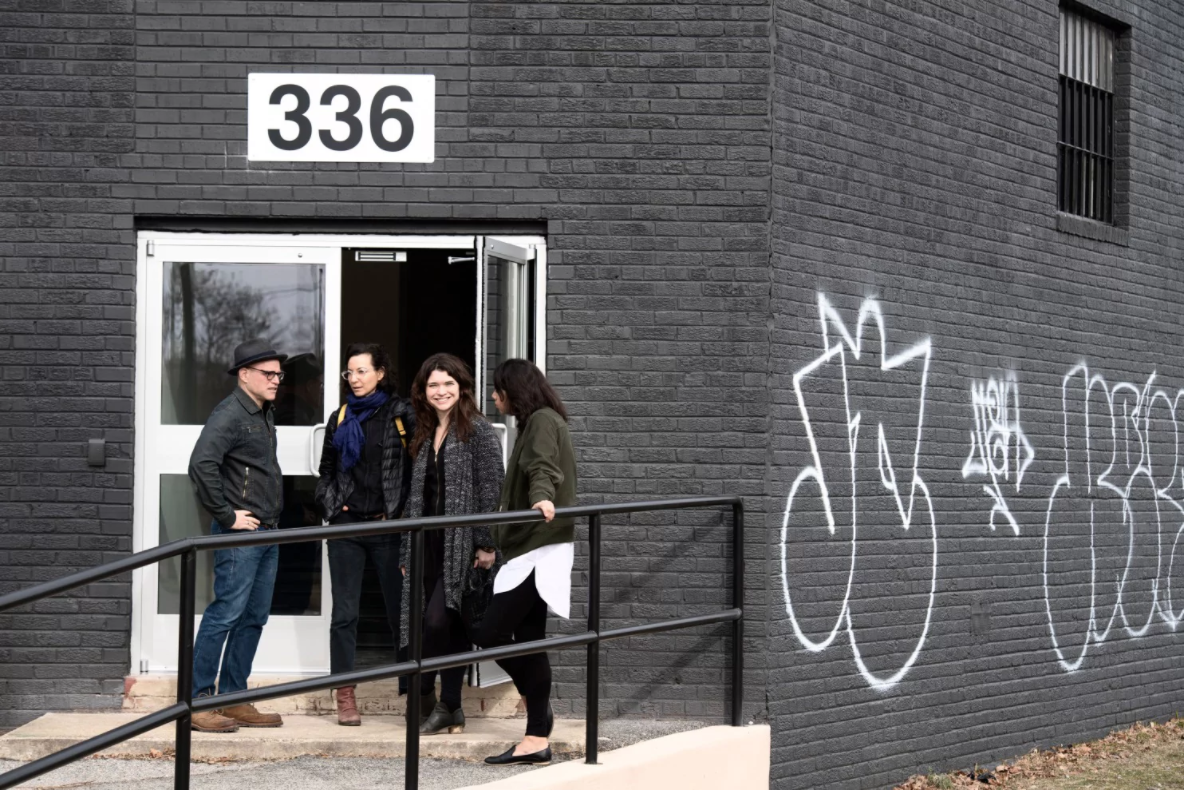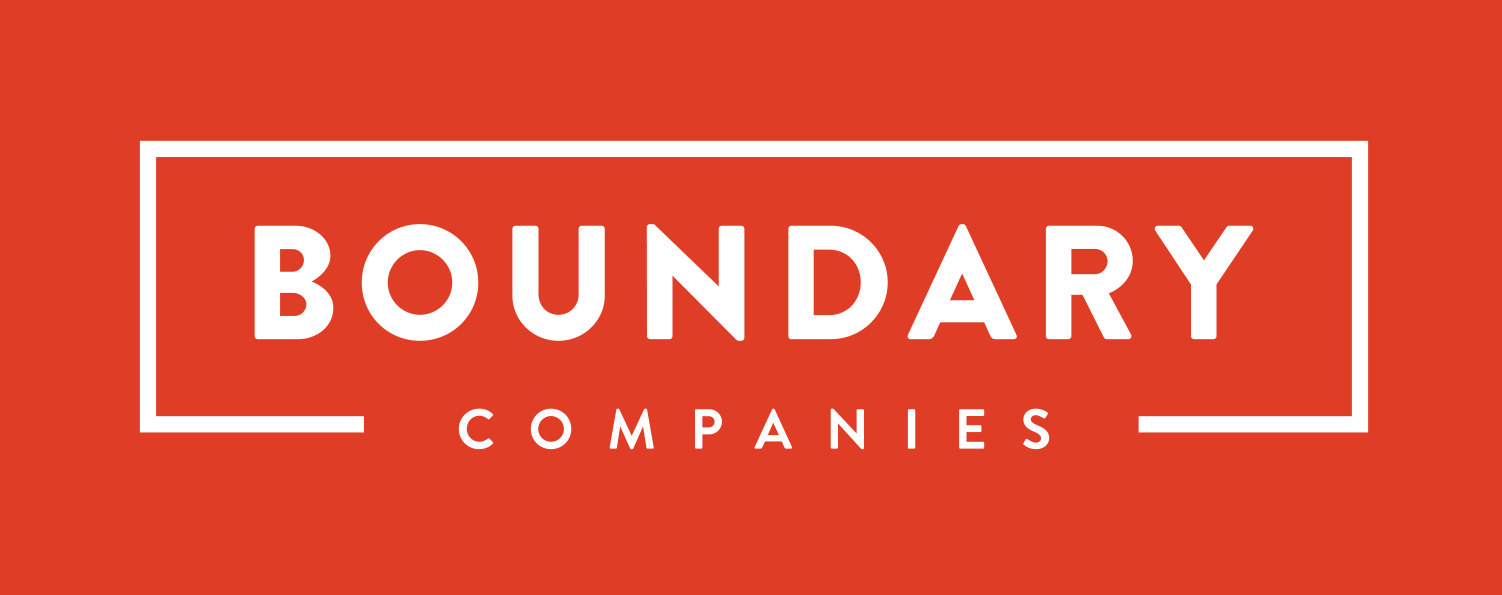
These prominent artists aim to change the District’s reputation as no place for artists

A group of award-winning local artists are developing this space in the District’s Eckington neighborhood, where they plan to offer affordable studio and exhibit space with the goal of redefining the city as an arts scene. From left to right, Tim Doud, Linn Meyers, Caitlin Teal Price and Rebekah Pineda. (Marvin Joseph/The Washington Post)
Tim Doud, a painter and art professor, still recalls the dire warning he received when he first arrived in the District in 2003.
“One of my friends said not to say I live in D.C.,” said Doud, 56, who moved here from Brooklyn to teach at American University. “So I didn’t even show [artwork] here for a while.”
That sounds familiar to Caitlin Teal Price, 37, an artist and D.C. native who moved back in 2010. “There is kind of a stigma with being an artist who lives in D.C.; you’re not as well-respected as an artist who lives in New York . . . There’s an outside perception that being in D.C., we’re not up to snuff because we’re known as a political town.”
Not to pile on, but the city’s architecture doesn’t help, said Linn Meyers, 49, who also grew up in the District but moved away to study art and develop her career elsewhere, returning in 2002 when her then-husband got a job here. “You think of cities for artists as being these old industrial spaces” — an architectural feature mostly lacking in the District. And the cheap real estate that has drawn artists to cities like Pittsburgh or Baltimore doesn’t exist here.
But these artists, who all enjoy national and international reputations and have been exhibited in museums like the Hirshhorn and the National Portrait Gallery, beg to differ with the idea that Washington is not an art town. They are embarking on a project they hope will turn around the city’s reputation as an artistic backwater.
The idea is to provide studio space to about 40 serious working artists, and in doing so create a community of artists and a destination for curators, collectors and visiting artists. They have even found an honest-to-goodness industrial space to house it: a two-story brick building in Eckington between the Rhode Island and NoMa Metro stops, not far from Catholic University and Union Market and abutting the Branch trail. The Phillips Collection, Halcyon, Studio Visit, Hamiltonian and the Washington Project for the Arts have also signed on as partners.
The Eckington property has for years been used as a therapy institute and Kabuki theater. Before anyone still alive can remember, it was a stable for a Nabisco factory. A wooden structure that was used to hoist hay up to the horses on the second floor still exists in one of the rooms.
That was a coincidence — the group had already come up with the name STABLE for the project. When they saw the building, “we said it’s kismet, it has to be,” Meyers said.
A friend who is a developer tried to buy the 36,000-square-foot building for them when it went up for sale in 2016, but he was outbid. However, the developer that bought it, Boundary Cos. (which is also developing a large mixed-use project with subsidized “maker space” in Eckington) and Foulger-Pratt, was willing to work with the group, offering an affordable 10-year lease on 10,000 square feet of the building and agreeing to build out the space on the condition that they raise $250,000 of their own to fund other aspects of the project.
It was a far cry from other developers they have encountered, who didn’t understand an enterprise that was not about the bottom line, Doud said. (One asked them how an art studio was different from a prison in business terms.) “They wanted the cool effect, but they didn’t understand the philanthropic model,” he said.
Developers might like the fact that artists move in to an underdeveloped neighborhood and pave the way for its gentrification, but they don’t always recognize the value in them being able to afford to stick around afterward, Meyers said.
“Having artists around is a way to brand yourself, but they don’t fully understand what an artist needs,” she said. “An artist needs solitude, an artist needs community, an artist needs stability, and this project has all of those components.”
Joshua Bernstein of Bernstein Management, the original bidder, said he sees this kind of deal as a win-win for developers. “It is a vital part of our cultural ecosystem,” he said. “I care about helping artists get established, especially in the challenging early years of their careers, but I also care as a resident and property owner because it enhances my life and those of our tenants.”
The D.C. Commission on the Arts and Humanities funds individual artists and arts organizations, but “they are not doing enough to foster community,” Meyers said.
“In other areas, governments understand the upside to having artists working in their areas — like Hyattsville gets it,” Meyers said. “They have an arts district that they’ve designated. . . . D.C. is seen as a government town. But we have so many wonderful, serious artists in this city. We just have to provide a space for us all to be together and then we will be visible.’’
Walking through the unfinished building recently, the group bristled with excitement. They pointed out the 18-foot-high space that will be divided into six large studios, and more warrenlike spaces that will house 18 more. Some studios will be shared, for a total of around 40 artists, who will apply and be selected by a panel of curators, arts professionals and other experts. The space will also house a lounge, a library and a 1,100-square-foot gallery, which will showcase artists from inside or outside the community. Half of the project’s annual budget will be covered by leasing space to individual artists and the other half through fundraising.
Two-thirds of the studios will be rented out with renewable leases. The rest will be reserved for visiting artists — including, the founders hope, international ones brought in by Washington’s embassies, which have the propensity to be natural partners with their interests in spreading culture.
The goal is not so much to help Doud, Meyers and Price professionally — as award-winning artists, they don’t really need it. Only Price will have daily involvement at the site as executive director, and she will move her studio there.
But the project partners do hope to benefit in other ways. All three described feeling isolated upon moving to the District after living in New York City, where there is a more robust community of artists to inspire and support each other.
So, while the artists at STABLE might work in solitude, the idea of the project is to foster community. “It’s not a space where you go in and close your door,” said Doud.
The group has raised about $75,000 of the $250,000 needed through donations and a grant. On Saturday, they will hold a dance party at the site to raise more.
The District also has some advantages for artists that places like New York don’t have, Price said. “D.C. is so small . . . you can actually know curators.”
If all goes well, the artists hope STABLE will be a spark that generates more such endeavors in the city and will change the way people see the city, from collectors and curators to tourists who may start to look for art beyond just the city’s big museums.
“People are hungry, they’re hungry for creativity and excitement,” Meyers said. “We need a soul and it’s here. . . . I’ve been talking to so many people saying they’ve wanted to see this happen for so long.”
Originally published: The Washington Post, January 28,2018, by:Tara Bahrampour
GO TO FULL ARTICLE